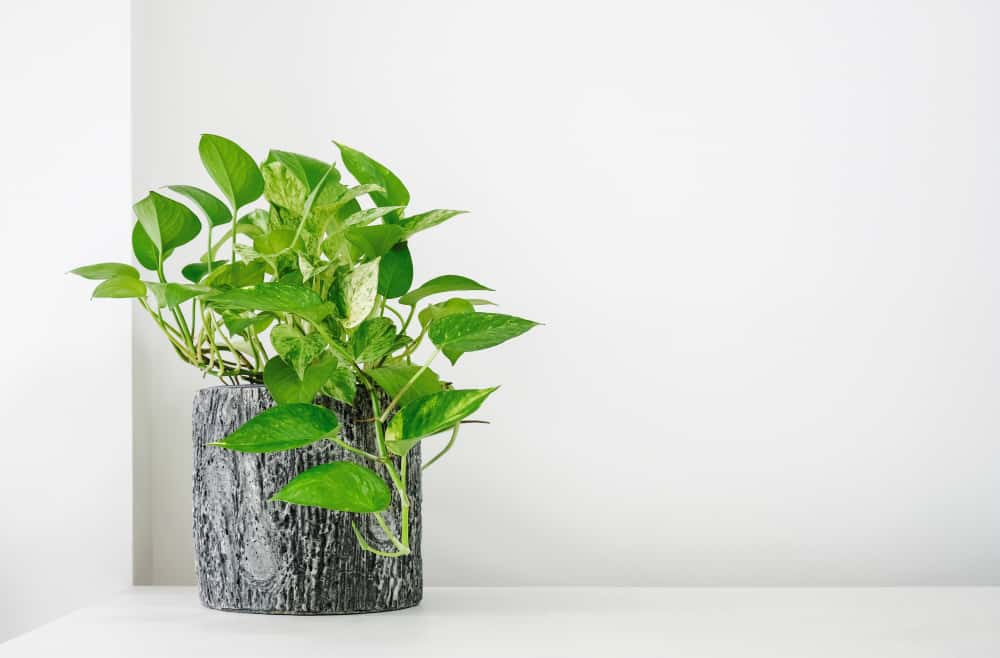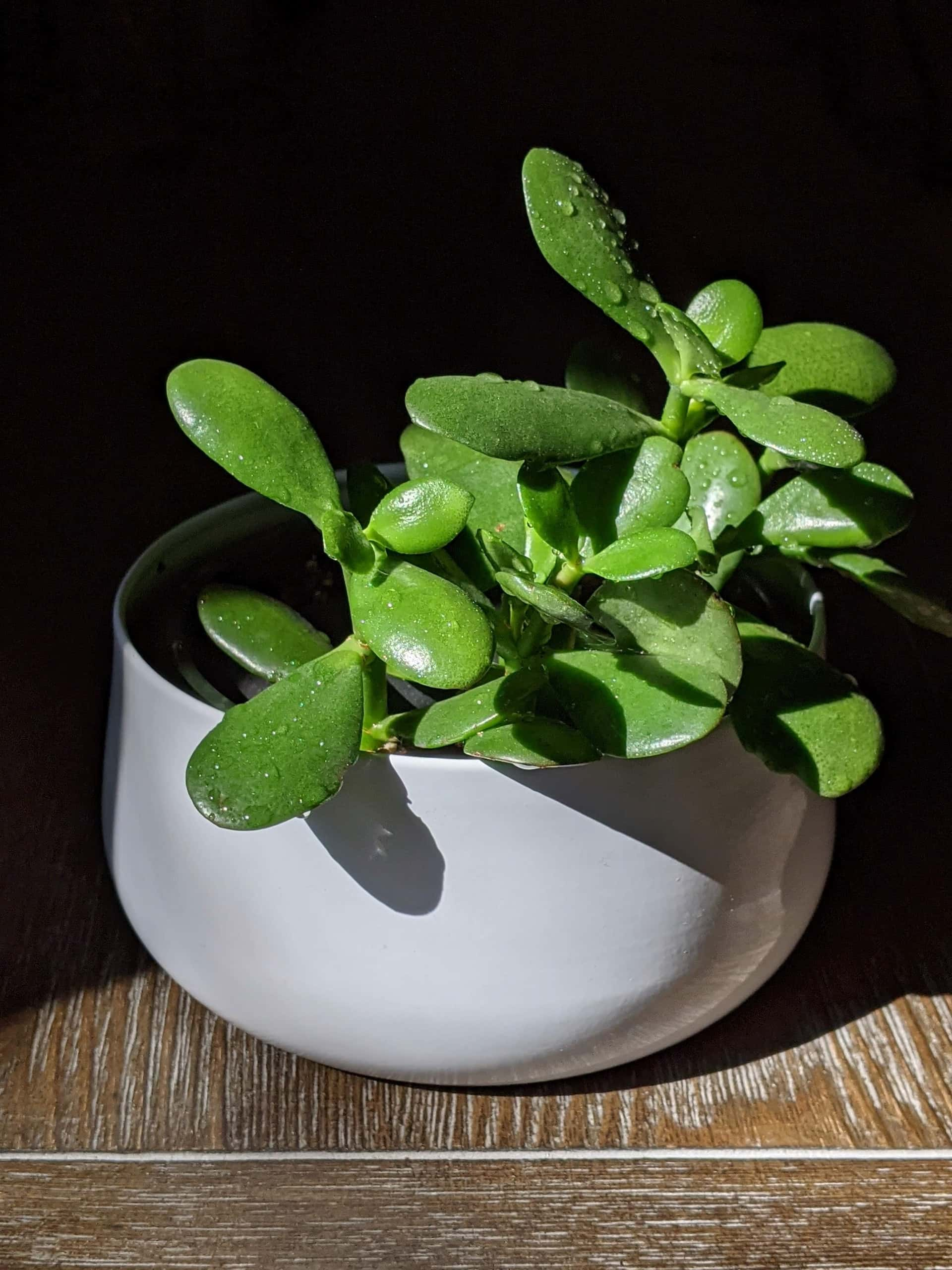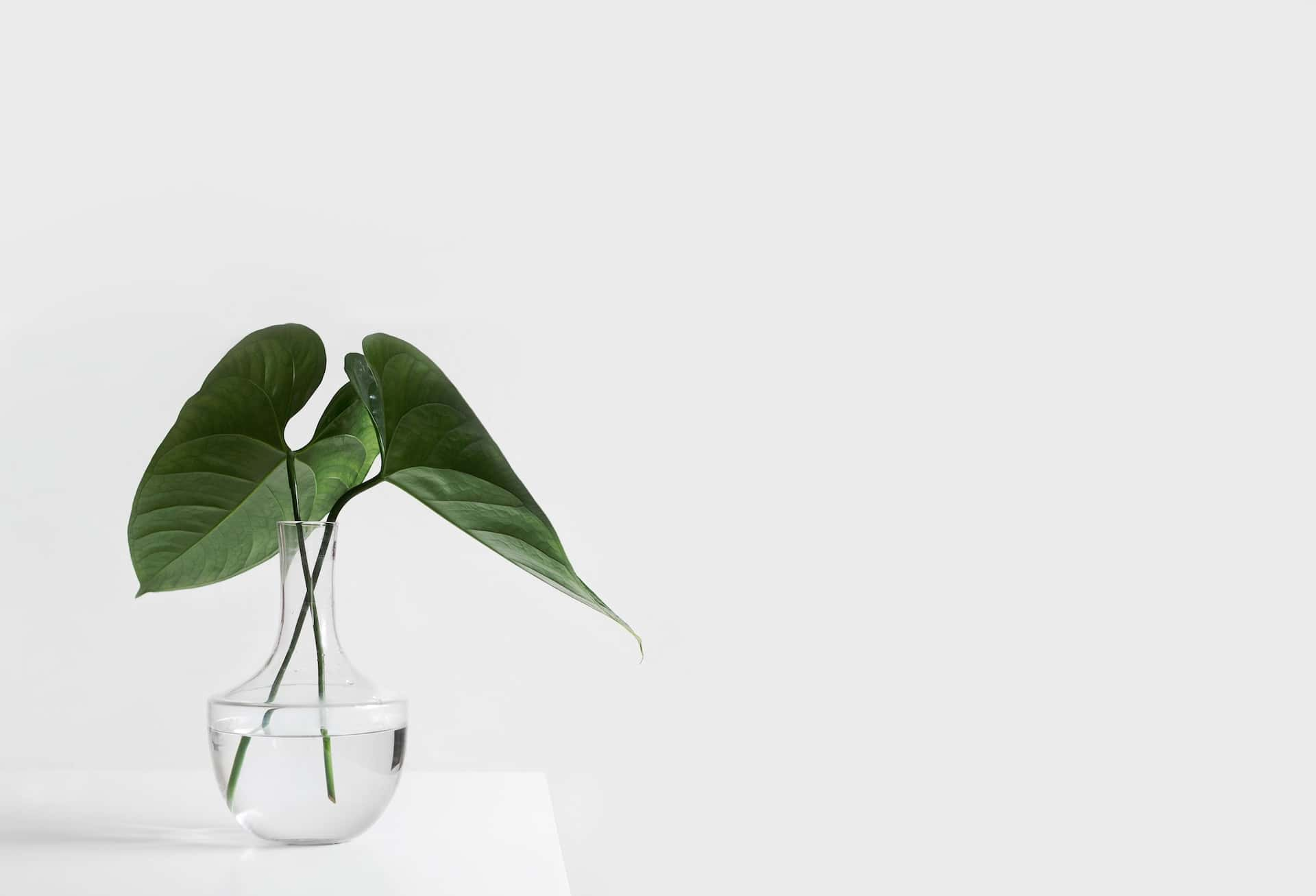Plants are the ideal complement to living room designs. Why? They help brighten your indoor environment while adding a refreshing touch of nature to those four boring walls. Having houseplants can instantly make a space feel more natural and vibrant.
In addition, indoor plants are also loved because they can help reduce anxiety and pain levels. If plants can offer us many benefits, then it is indeed only “natural” to grow these tiny friends in our homes.
If you are new to the art of incorporating indoor plants into your home decor, you may be wondering where to start with. Well, how about you start with some beautiful creepers? Yeah, we are talking about money plants.
Money plants are a fantastic way to add life to your home decor without breaking the bank. These houseplants are easy to care for, look great in any setting, and require very little maintenance. You can grow them in soil, water, or even jelly, making them perfect for various climates and pot sizes.
Plus, they’re an eco-friendly option that will help purify the air in your home. Here is what you need to know about money plants and different types of money plants.

What Are Money Plants?
Scientifically known as Epipremnum aurenum, money plants are indoor plants with leaves and ariel roots that cling onto anything closer in their vicinity. Money plants go by names such as Golden Pothos, Marble Queen, Silver Vine, Taro Vine, or Devil’s Ivy.

Money plants belong to the hardy foliage plant of the arum family and are mainly native to South East Asia. As a houseplant, it is most commonly seen as a hanging plant. Money plants use their aerial roots to climb tall trees or poles to reach extreme heights.
Advantages of Money Plants

Money plants are probably the most common indoor plants. The reasons are various.
- Money plants aren’t just perfect for decoration. They serve a purpose! These plants are natural air purifiers and humidifiers, which can filter the atmospheric air inside your home and increase the oxygen flow. So, if you struggle to get pollution-free air outside, invite some fresh air inside your home by growing these houseplants. Not only will you benefit from cleaner air, but you’ll also enjoy some greenery inside your home!
- Various research studies have shown that keeping plants, such as different types of money plants, can help improve your mood and reduce anxiety. Money plants have been shown to have neurophysiological effects on our bodies that help us feel better and less stressed. So, by keeping money plants in your home, you’re essentially keeping your anxiety and stress outside of your home.
- Money plants require low maintenance and are easy to grow. You can easily purchase different types of money plants from your local horticulturist.
- In addition to these health benefits, money plants are popularly known for inviting positivity, prosperity, good luck, and happiness to the planted space. Vastu and Feng Shui note that money plants substantially affect one’s financial well-being. Now you know where money plants got their name from!
In summary, one can never go wrong with money plants. Different types of money plants (with pictures) are listed below for you to select from. So, let us get started.
Types of Money Plants to Consider For Your Home
Money plants are the best houseplants for bringing prosperity and good fortune to your home. Many people tend to believe that there are very few varieties of money plants. It means they can only choose between two or three types of money plants.
Well, this is far from the truth. You would be surprised to know that many types of money plants are available for individuals with an eye for eco-friendly home decor. We’ll cover some of the most common varieties of money plants here. Let’s get to know these types better.
Monstera Deliciosa Money Plant

The scientific name for the split-leaf money plant is Monstera deliciosa. These types of money plants are widely popular among newbie plant lovers because they are relatively easy to take care of.
Monstera deliciosa plants are drought-tolerant, meaning they do not require daily watering and can grow in low sunlight. This means that you can keep them in any place inside your house. Their leaves are very big and lobate, which many people find appealing.
These plants may need more care as they grow because they take nutrition from nearby plants in your house (if any). If not given proper care, they may even suffer an early death.
Golden Pothos Money Plant

The Golden Pothos money plant, also known as the Devil’s Ivy, is a bright and hardy plant that is very difficult to kill. Even without light or water, this plant can remain green and grow.
If you’re looking for ways to incorporate this plant into your home decor, consider using it to create a natural boundary wall or placing it in a hanging pot in your modular kitchen.
Marble Queen Money Plant

Marble Queen plants are beautiful money plants with creamy white leaves having a natural marble-like texture. Unlike most money plants, these types of money plants have long leaves. They also require bright sunlight to maintain their creamy white colour.
In other words, these money plants tend to grow best in spaces with plenty of sunlight – for instance, balconies or gardens. You can also keep your plants inside. But ensure that your marble queen gets at least four to six hours of sunlight daily. You can find them in most local nurseries.
Jade Money Plant

One of the most popular types of money plants is perhaps the Jade money plant. These houseplants are typically seen in tropical regions. These plants are suitable to be grown both outdoors and indoors. Unlike marble queens, they do not require much attention and can survive in extremely dry conditions.
Their short dark green leaves look entirely different from other types of money plants. You can place these plants on an uplifted stool so that their foilage lends a classic touch to your living room designs.
Bigleaf Money Plant

The bigleaf money plant gets its name from its big leaves and thick trunks. These plants are another famous option if you are newly starting gardening. The reason is their less reliance on human care.
Bigleaf plants demand ample space so that you can hide your dirty spot behind their big leaves. It is a climber plant that you can grow inside and outside your house.
Neon Money Plant

Neon money plants have distinguishing and unique foliage that looks like a cute little basket. Their bright golden yellow colour offers these plants a neon or glowing effect.
The neon effect or glow is more visible when the leaves are young. As these leaves mature, they slightly lose their shine. You can plant these types of money plants inside your modular kitchen to give your kitchen a hint of a cheerful glow.
How to Take Care of Your Money Plant?
Money plants are tough and resilient, making them ideal for those who don’t have a green thumb. They’re also very easy to care for, so even if you’re not great with plant care, you can still manage to keep a money plant alive and healthy. Simply put, you can quickly grow money plants inside your home without worrying too much about their care and maintenance.

Even though money plants are easy to take care of, that does not mean you should take them for granted. They still need your attention from time to time and a little love talk now and then. Failing to do so may result in stunted growth and even early death of these beauties. Thus, you should acquaint yourself with the following tips to take care of your money plants.
- Money plants are highly versatile plants. While money plants can grow in water, soil, and jelly, they show the best growth when kept in soil. So, you can try planting them in soil and a pot that gives them enough room to spread themselves.
- Do not put your money plant in direct sunlight. Direct exposure to the sunlight can damage your money plant and may also slow its growth.
- All types of money plants do not require regular watering. However, ensure that you water your plant every two to three days. Else, their leaves may tend to become dry and even rot. Also, the habit of watering your money plants daily if kept outside. In other words, do not over-water your money plants, or they will die.
- Place your money plant in a humid climate with shade for faster growth.
- Maintain the moisture levels of your plants. Make sure that there is enough dampness and humidity in the soil or pots.
- Feed the plants with good natural or artificial fertilizer after every 15-20 days to maintain proper nutrition levels.
- When planting different types of money plants in soil, engage in the periodic softening of the soil to ensure the roots are entirely aerated. This should always be done before feeding the plant.
- Avoid placing your money plant in extremely cold weather. If possible, ensure that the surrounding temperature is above 5 degrees Celsius.
- Some money plants are happy in a shaded spot. Others prefer bright sunlight. Thus, put your money plants in the space (i.e., outdoor or indoor) depending on the kind you own.
Conclusion
Recently people have started noticing the benefits of adding plants as part of their home decor. For beginners, indoor plants are always perfect because they do not require much time and maintenance. If you are inclined towards the thought of keeping indoor plants that do not need too much care, these friendly money plants are your go-to choice.

Since money plants can grow on water, you do not even have to worry about getting dirty dealing with soil. In this blog, we have shared a variety of money plant alternatives and different types of money plant images. You can pick the right one per your preference.
So, begin your first (or maybe not the first) experience with nature now!
FAQs
1. How many types of money plants are there?
Ans. The two most popular types of money plants are Jade and Pachiar Aquatica. Jade is most familiar as a type of money plant, while pachira aquatica is also known as the money tree.
However, many money plants are available, which can go as broadly as between four and nine typical types depending on various sources. The sub-types of money plants can be as many as 10 (some of them are listed above).
2. Which type of money plant is best?
Ans. You can pick up jade money plants for your modular kitchen, as their shoot is not the normal creepers that other types of money plants tend to have. The Jade plant also attracts money, happiness, and prosperity.
3. What type of leaf does the money plant have?
Ans. Leaves of money plants can be slightly different depending on the type of money plant. On average, money plant leaves are alternate and heart-shaped. The breath of the leaves varies between 100 cm and 45 cm. Juvenile leaves are way smaller and are typically 20 cm long.
4. Which colour money plant is suitable for a home?
Ans. Money plants offer many spiritual or fortune-related benefits. That is why the surrounding where they are kept is extremely important. According to Feng Shui and Vastu, money plants attract more fortune and positive vibes when kept in a green or blue hue.
The most economical way to change the surrounding colour of your money plant is by growing your money plants in vases or pots that are green or blue hue.
5. Are there any disadvantages of growing a money plant?
Ans. Gowing money plants are strongly recommended as per Vastu and Feng Shui. However, certain reservations about where these plants should be grown according to these ancient traditions also exist.
Nevertheless, there is a more scientific rationale for this suggestion. Since money plants are not a fan of hot climates, money plants can quickly dry up when placed outside. And Vastu considers a plant with stunted growth as inauspicious that can attract financial scarcity.
6. How can I grow my money plants faster?
Ans. Money plants are easy to take care of. However, when ignored, they can see stunted growth. Therefore, one should try to change the water of your money plant frequently to fasten its growth.
Likewise, trimming your money plants can also help them to grow faster. In addition, if you can remove the dried or dead leaves from its surrounding, your money plant may respond better to your care and treatment.




